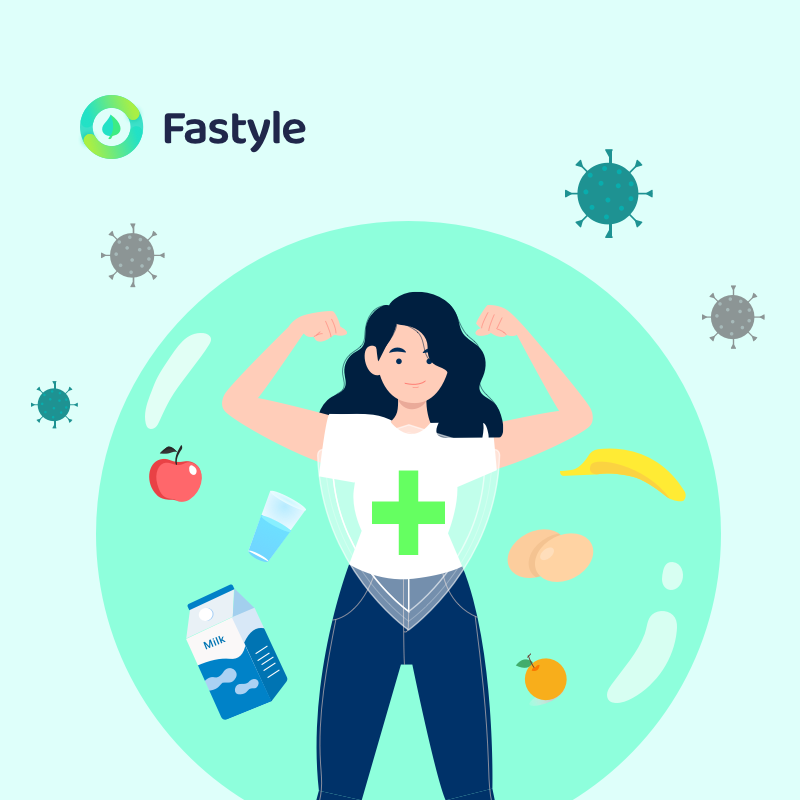August 31, 2021 has witnessed over 130 people who have lodged a damages suit against a restaurant franchise that sells “gimbap”, or seaweed rice rolls with vegetables, over food poisoning. A total of 276 people who ate gimbap at the two branches of a gimbap chain in Seongnam between July 29 and Aug. 2 showed food poisoning symptoms. Forty of them were hospitalized for treatment.
As a matter of fact, the distance between you and food poisoning is just a meal.
Do you know 1 in 6 Americans get sick from food poisoning each year? Foodborne illness is a public health issue causing an estimated 49 million illnesses every year in the United States. It is important to minimize the chance of food poisoning or foodborne illness to maintain a strong immune system during this pandemic. In this article, we will talk about food safety and how to prevent foodborne illness with the food you’ve prepared and purchased.
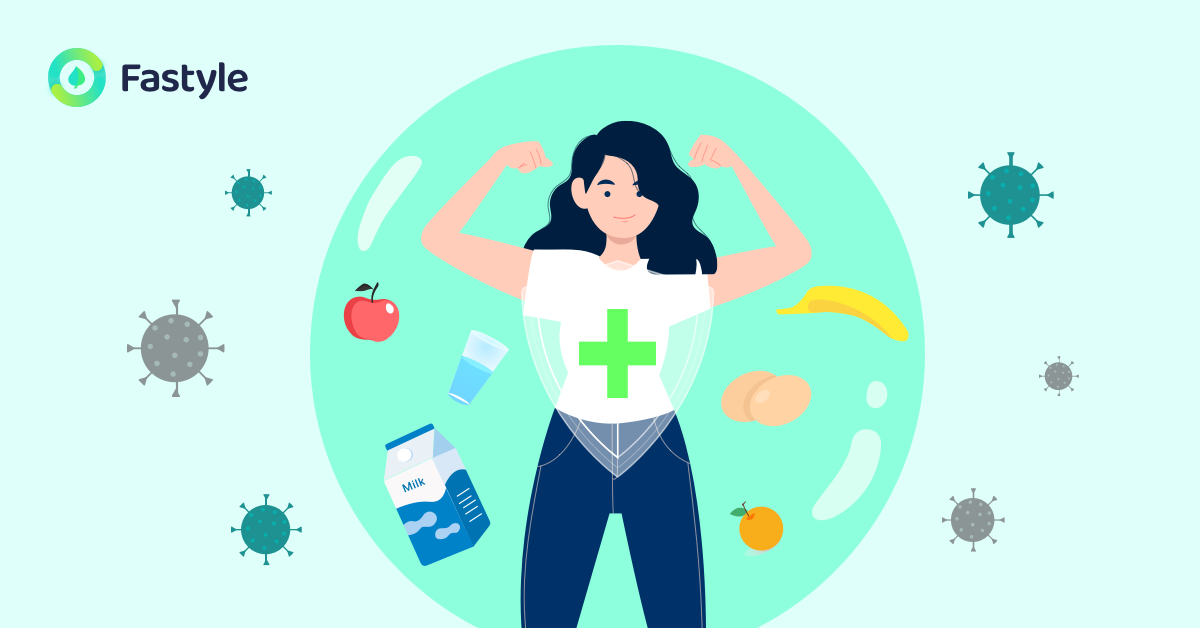
What is foodborne illness – bacteria and contamination
Foodborne illness often comes from eating contaminated food. Bacteria are naturally found in our environment, with harmful bacteria strains causing contamination. Harmful bacteria may be present on food products, such as:
- Plastic wrapped boneless chicken breasts
- Ground meat
- Raw meat, poultry, seafood and eggs were unpasteurized
- Sometimes fresh fruits and vegetables, such as cut melons and raw sprouts.
- Unpasteurized milk
Cross-contamination can happen between raw and cooked or ready to eat foods, poor personal hygiene from the food handlers, and poor food storage environments. Most cases of foodborne illness can be prevented with proper cooking or processing of food to destroy bacteria.
When foods are cross-contaminated and were eaten, onset symptoms may occur within minutes to weeks. Some common symptoms of foodborne illness include:
- Stomach flu
- Nausea, abdominal pain/cramps
- Diarrhea
- Vomiting
- Dehydration
- Fever and muscle aches
Anyone can get a foodborne illness from eating foods contaminated by harmful bacteria. However, some people who are at greater risk are infants, young children, pregnant women, and their unborn babies, older adults, and people with weakened immune systems, such as those with HIV/AIDS, cancer, diabetes, kidney disease, and transplant patients. Some people may have symptoms soon after having a few harmful bacteria, and some may not have significant symptoms.
How to stay safe from food poisoning while cooking at home
The USDA has put together a simple guide to help avoid cross-contamination and foodborne illness with simple 4 steps: clean, separate, cook and chill.
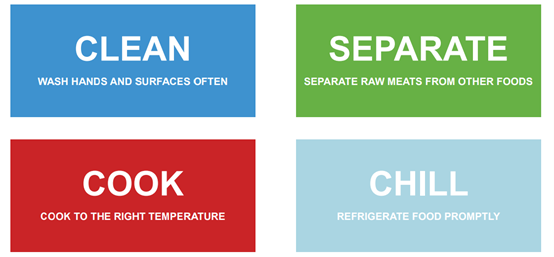
Clean – wash hands and surfaces often
- Wash hands with soap and warm water before and after handling raw food.
- Thoroughly wash utensils, cutting board, and countertops with soap and hot water.
- Rinse fresh fruits and vegetables thoroughly under running water just before eating, cutting or cooking.
- Clean lids before opening canned goods.
Separate – separate raw meat from other foods
- Keep raw meat, poultry, eggs, seafood and their juices away from ready-to-eat food. Put them on different shelves in your fridge!!!
- Separate raw meat, poultry and seafood from other foods in your grocery cart, bags and refrigerator.
- Never place cooked food on a plate that previously held raw meat, poultry, eggs and seafoods unless the plate has been washed in hot, soapy water.
- Don’t reuse marinades used on raw food on cooked food, unless it is boiled first.
Cook – cook to the right temperature
- It is best to use a food thermometer for meat, poultry, seafood and egg products to ensure a safe minimum internal temperature.
- Cook eggs until the yolk and white are firm or use pasteurized eggs for soft eggs recipe.
- Use pasteurized milk and cheese.
- Bring sauces, soups and gravy to a coil when reheating.
Chill – refrigerate food promptly
- Keep the temperature lower than 40 ℉in refrigerator, and 0℉in freezer.
- Thaw foods in refrigerator/cold running water/microwave. DO NOT leave food at room temperature for more than two hours (one hour when temperature is >90℉) or in hot water.
- Refrigerate or freeze meat, poultry, eggs seafood and other perishable within 2 hours of cooking or purchase.
- Always marinate food in the refrigerator.
- Divide large pots of food into shallow containers, smaller portions to allow quicker cooling.
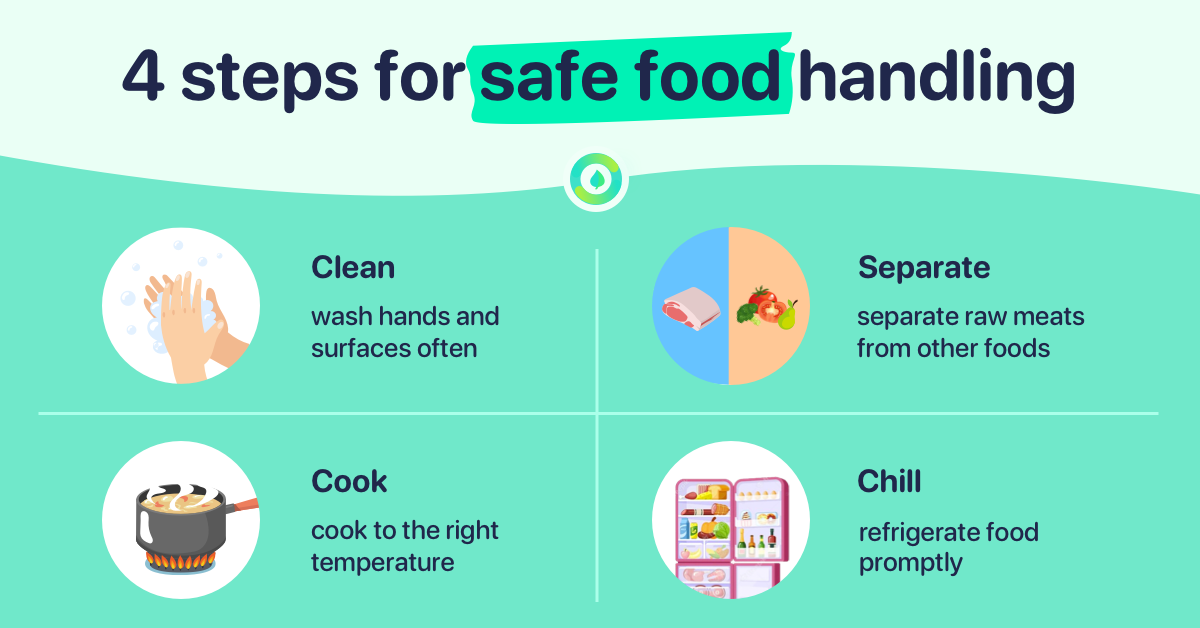
How temperatures affect food – Danger Zone
Bacteria exist everywhere in nature and can grow rapidly when presents with nutrients (food), moisture, time, and a favorable temperature. Therefore, temperature plays an important role in keeping food safe.
Leaving food out in the range of temperatures between 40℉and 140℉can cause bacteria to grow rapidly to dangerous levels. This range of temperatures is often called the “Danger Zone”. Keeping foods out of the “Danger Zone” can reduce the risk of bacteria growth for both foods you’ve made and purchased. There are a few ways to avoid the “Danger Zone”.
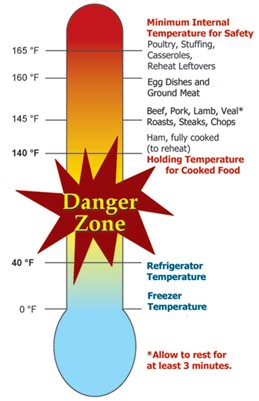
Keep food out of the “Danger Zone”
- Keep hot food hot, at or >140℉. Place food in preheated steam tables, oven, warming trays, and/or slow cookers.
- Keep cold food cold, at or <40℉. Place food in container on ice/refrigerator.
Cooking
- Raw meat and poultry should always be cooked to a safe minimum internal temperature (see graphic). If you’re not going to serve hot food right away, keep it at or >140℉.
- If raw meat and poultry have been left in the “Danger Zone” for too long, bacteria may grow and produce toxins that are heat resistant and cannot destroyed by cooking.
Storing leftovers
- Leftovers is one of the most common causes of foodborne illness is improper cooling of cooked foods.
- Leftovers must be put in shallow containers or smaller portion for quick cooking and refrigerated at 40℉or below within two hours.
Reheating
- Food should be reheated thoroughly to an internal temperature of 165℉ or until hot and steaming.
- In microwave oven, cover food and rotate so it heats evenly, with at least 2 minutes stand time.
Cold Storage Temperatures
- Set refrigerator and freezer at right temperature. <40 ℉in refrigerator, <0℉in freezer
- Follow safe storage time for different foods. When in doubt, throw it out!
- Throw away rotten, moldy. Avoid bruised products.
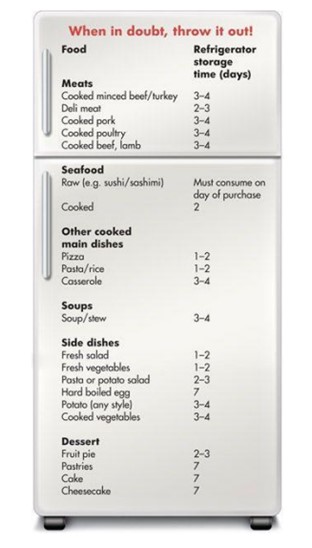
Summary
- Recognize some common food sauces with bacteria and may cause cross-contamination.
- Follow the 4 steps for safe food handling:
- Clean – wash hands and surfaces often
- Separate – separate raw meats from other foods
- Cook – cook to the right temperature
- Chill – refrigerate food promptly
- Keep and store your food out of the “Danger Zone”. Always reheat to safe temperature before eating.
Reference:
https://www.fsis.usda.gov/food-safety/foodborne-illness-and-disease
https://www.fsis.usda.gov/sites/default/files/media_file/2021-04/FSF-Brochure-NOV2019.pdf
FOLLOW US
